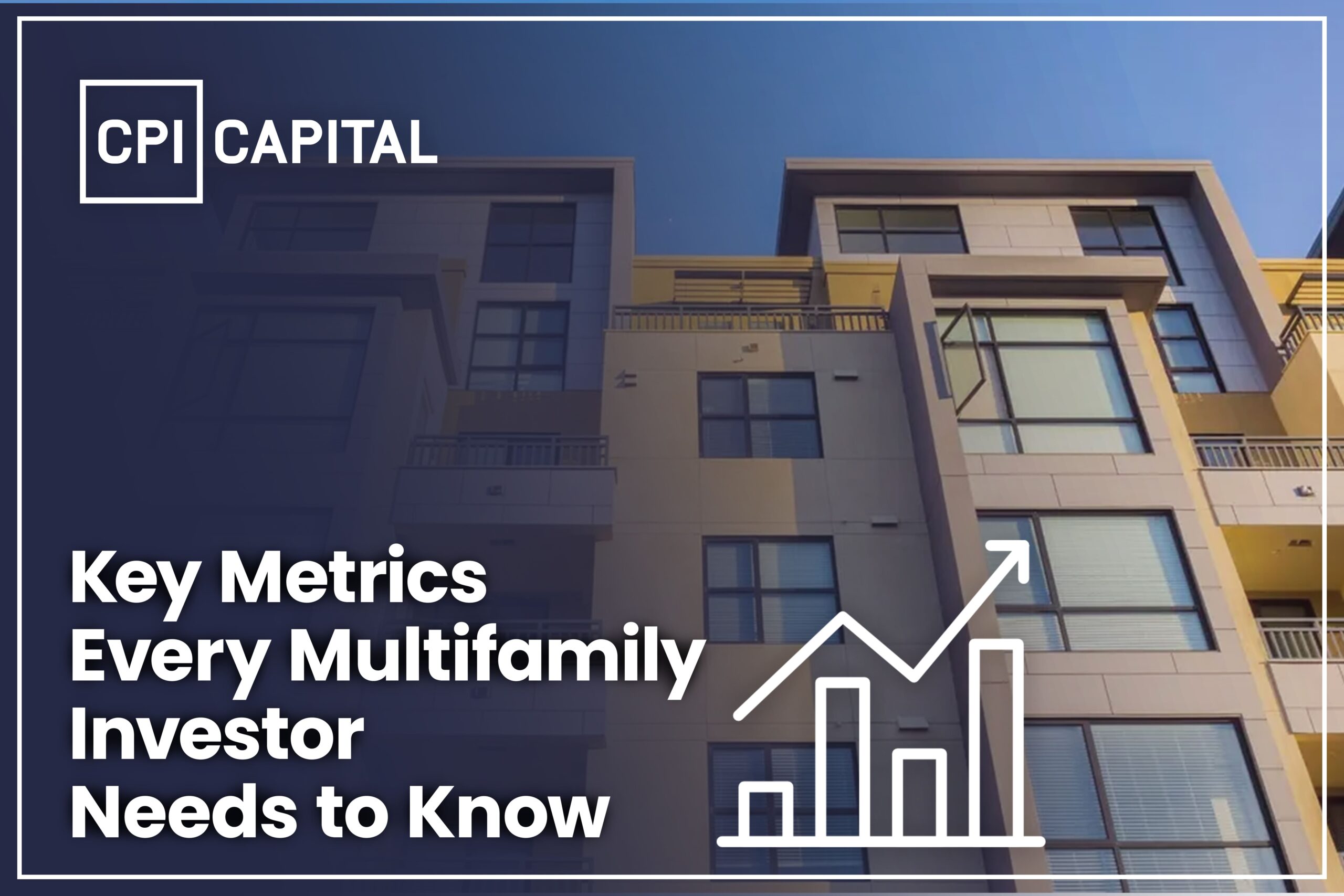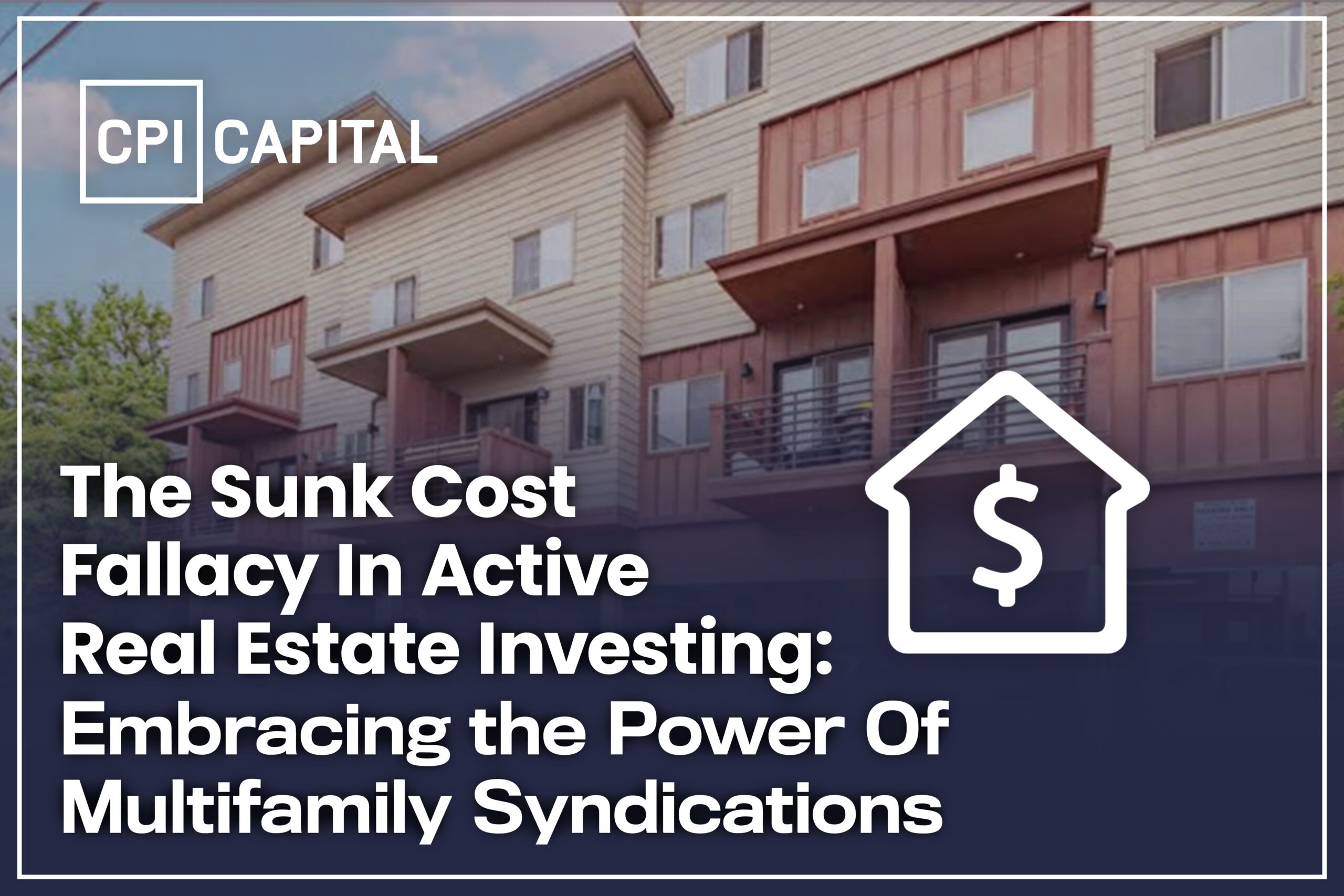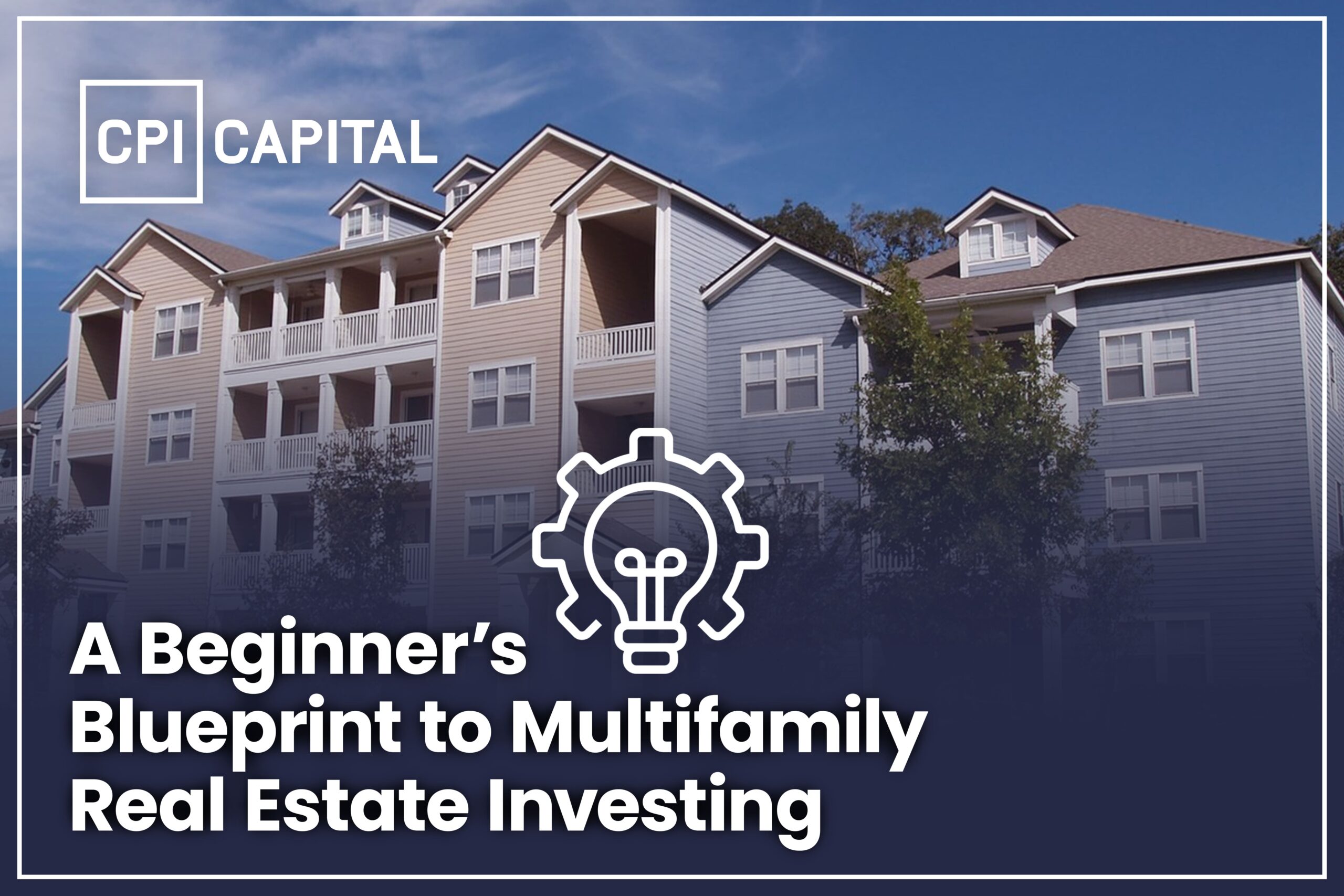
Welcome once again to this week’s CPI Capital’s news briefing. Our regular, weekly newsletter contains a mixture of updates, commentary and informative related articles about the lucrative world of passive real estate investment.
If you are already one of our subscribers, thank you. If you are not, take the chance to sign up to our newsletter now and keep right up to date with all you need to know about syndicated real estate investment!
SIGN UP HERE to receive our investment offerings
In an ever-changing real estate market, understanding and analyzing key metrics is the cornerstone of successful multifamily property investment. This comprehensive analysis allows investors to navigate through the complexities of the market, making informed decisions that ultimately lead to profitable outcomes. Just as CPI Capital utilizes a meticulous and data-driven approach to optimize investment strategies, individual investors must also arm themselves with the essential tools and knowledge required to thrive in the multifamily property market.
Investing in multifamily properties can be a lucrative venture, but it requires careful analysis and evaluation of key metrics. These metrics serve as important indicators of the property’s potential and can help investors make informed decisions. In this article, we will explore the importance of key metrics in multifamily investment and discuss some essential metrics every investor should consider.
Understanding the Importance of Key Metrics in Multifamily Investment
Before diving into the specific metrics, it’s crucial to understand the role they play in investment success. Multifamily investment involves purchasing properties with multiple units, such as apartment buildings or condominium complexes. The profitability of these investments depends on various factors, such as rental income, expenses, market conditions, and property management efficiency.
Key metrics act as measurable benchmarks that enable investors to assess the financial health, potential return on investment , and overall viability of multifamily properties. By analyzing these metrics, investors can gain valuable insights into the property’s cash flow, market conditions, and management efficiency. This information allows them to make informed decisions and maximize their chances of success.
One of the key metrics that investors consider is the gross rent multiplier (GRM). This metric helps determine the property’s value by comparing the purchase price to the gross rental income. A lower GRM indicates a potentially better investment opportunity, as it suggests a higher return on investment.
Another important metric is the capitalization rate (cap rate) . This metric measures the property’s potential return on investment by dividing the net operating income (NOI) by the property’s value. A higher cap rate indicates a higher potential return, but it’s essential to consider other factors such as market conditions and property management before making a decision.
Furthermore, investors often analyze the vacancy rate, which measures the percentage of unoccupied units in a property. A low vacancy rate indicates high demand and suggests a stable rental income. On the other hand, a high vacancy rate may raise concerns about the property’s marketability or management efficiency.
In addition to these metrics, investors also consider the average rent per unit, which helps determine the property’s income potential. By comparing the average rent to the market rent, investors can assess whether there is room for rental growth and potential profit.
Moreover, the expense ratio is another crucial metric that investors evaluate. This ratio compares the property’s operating expenses to the gross income. A lower expense ratio indicates better cost management and potentially higher profitability.
Lastly, investors often analyze the debt service coverage ratio (DSCR) , which measures the property’s ability to generate enough income to cover its debt obligations. A higher DSCR indicates a lower risk of default and provides reassurance to lenders.
By considering these key metrics and analyzing the data, investors can make informed decisions about multifamily investments. It’s important to note that these metrics should not be viewed in isolation but rather as part of a comprehensive evaluation of the property’s financial health, market conditions, and management efficiency.
Essential Metrics for Evaluating Multifamily Properties
When evaluating multifamily properties, several key metrics deserve close attention. Let’s explore these metrics and their significance:
Cash Flow Analysis
Cash flow analysis is a fundamental metric that assesses the property’s ability to generate consistent rental income while covering all expenses. By subtracting the operating expenses from the rental income, investors can determine the property’s net operating income (NOI). A positive cash flow indicates a profitable investment, while negative cash flow may signal financial challenges.
When analyzing cash flow, it is important to consider not only the current rental income but also potential future income growth. Factors such as rental market trends, demand for multifamily properties in the area, and the potential for rental increases can significantly impact the property’s cash flow over time.
Additionally, investors should also take into account any potential expenses that may arise in the future, such as repairs, maintenance, or unexpected vacancies. By considering these factors, investors can make a more accurate assessment of the property’s cash flow potential.
Capitalization Rate
The capitalization rate , or cap rate, is another essential metric for evaluating multifamily properties. It represents the potential return on investment by measuring the property’s net operating income relative to its market value. A higher cap rate indicates a higher potential return, but it may also indicate higher risks or lower property value appreciation.
When considering the cap rate, investors should take into account the prevailing market conditions and the specific characteristics of the property. For example, properties located in high-demand areas with limited supply may have lower cap rates due to higher property values. On the other hand, properties in emerging markets or with potential for value appreciation may have higher cap rates.
It is important to note that the cap rate is just one factor to consider when evaluating a multifamily property. Investors should also assess other factors such as the property’s location, condition, potential for rental growth, and overall market conditions to make a well-informed investment decision.
Gross Rent Multiplier
The gross rent multiplier (GRM) is a metric used to assess the property’s value by comparing the purchase price to its gross rental income. It provides a quick snapshot of the property’s affordability and income potential. A lower GRM indicates a higher potential return on investment.
When using the GRM, it is important to consider the specific market conditions and the property’s unique characteristics. Different markets may have different GRM ranges, and factors such as location, property condition, and rental demand can significantly impact the GRM.
Investors should also consider the potential for rental growth when evaluating the GRM. If the property has the potential for rental increases or improvements that can lead to higher rental income, the GRM may improve over time, indicating a higher potential return on investment.
Debt Service Coverage Ratio
The debt service coverage ratio (DSCR) evaluates the property’s ability to generate sufficient income to cover debt obligations. It measures the property’s net operating income relative to its debt service payments. A higher DSCR indicates a lower risk of defaulting on loan payments.
When analyzing the DSCR, investors should consider not only the current income but also potential income growth and any potential changes in expenses. It is important to ensure that the property’s income is sufficient to cover not only the current debt obligations but also any potential increases in interest rates or other expenses that may arise in the future.
Investors should also consider the lender’s requirements when evaluating the DSCR. Different lenders may have different DSCR thresholds, and it is important to ensure that the property meets the lender’s criteria for loan approval.
In conclusion, evaluating multifamily properties requires a thorough analysis of various metrics. Cash flow analysis, capitalization rate, gross rent multiplier, and debt service coverage ratio are just a few of the essential metrics that investors should consider. By carefully assessing these metrics and considering other relevant factors, investors can make informed decisions and maximize their potential returns in the multifamily property market.
Metrics for Assessing Market Conditions
In addition to evaluating multifamily properties themselves, it’s crucial to assess the market conditions in which they operate. The following metrics can provide valuable insights:
Vacancy Rates
Vacancy rates measure the percentage of unoccupied rental units in a specific market or area. Lower vacancy rates indicate higher demand and potential for rental income growth. Monitoring vacancy rates can help investors identify promising markets and avoid areas with oversupply.
For example, in a city with a low vacancy rate, such as San Francisco, where the demand for rental properties is high due to a booming tech industry and limited housing supply, investors can expect to command higher rental prices and experience lower vacancy rates. On the other hand, in a city with a high vacancy rate, such as Detroit, where the population has been declining and the economy has struggled, investors may face challenges in finding tenants and achieving desirable rental income.
Rental Market Trends
Staying abreast of rental market trends is vital for understanding tenant preferences and rental rates in a specific location. By analyzing rental market trends, investors can identify shifts in demand, rental price fluctuations, and emerging opportunities.
For instance, by studying rental market trends in a college town, investors may discover that there is a consistent demand for smaller, more affordable rental units due to a large student population. This information can guide investors in making decisions about property size and rental rates, ensuring they cater to the specific needs and preferences of the target tenant demographic.
Economic and Demographic Factors
Consideration of economic and demographic factors is crucial when assessing market conditions. Factors such as population growth, employment rates, and local economic stability can significantly impact rental demand and property values. Investors should research and analyze these factors to make informed investment decisions.
For example, a city experiencing rapid population growth, like Tampa, Florida, may present a favorable market for multifamily property investments. The influx of new residents can drive up rental demand, leading to increased rental rates and potential appreciation in property values. Conversely, in a city with a declining population and limited job opportunities, such as a former manufacturing hub, investors may face challenges in attracting tenants and achieving desirable returns on their investments.
By considering economic and demographic factors, investors can gain a deeper understanding of the market conditions and make strategic investment choices that align with the potential for rental income growth and property value appreciation.
Metrics for Property Management Efficiency
Efficient property management is paramount to maximize returns and ensure a smooth operation. The following metrics can help investors evaluate the management efficiency of multifamily properties:
Operating Expense Ratio
The operating expense ratio (OER) measures the property’s expenses relative to its gross operating income. A lower OER indicates effective expense control and higher profitability potential. It is essential to monitor OER to ensure expenses are well-managed and in line with industry standards.
Return on Investment
Return on investment (ROI) measures the profitability of an investment by comparing the gains or losses to the initial investment. It considers both rental income and appreciation in property value. A higher ROI indicates a more profitable investment.
Net Operating Income
Net operating income (NOI) represents the property’s total revenue from operations minus operating expenses, excluding debt service payments. NOI is a crucial metric for evaluating the property’s financial performance and potential return on investment.
Download and read our FREE e-book: 25 Fundamental questions to ask a Syndication Sponsor before making your investment
In conclusion, multifamily property investment is a multifaceted venture that requires a holistic understanding and in-depth analysis of various key metrics. These metrics are not just numbers on a page; they are vital indicators that paint a clear picture of the property’s financial health, market standing, and management efficiency. It is through the meticulous evaluation of these metrics that investors can make informed decisions, mitigate risks, and navigate the path to success in the multifamily property market. Much like CPI Capital strategically utilizes data and analytics to maximize investment outcomes, individual investors must also employ a detailed and methodological approach to unlock the full potential of their multifamily investments. The keys to success lie in knowledge, analysis, and strategic action, all of which are founded on a solid understanding of essential investment metrics. We invite you to partner with CPI Capital as we strive to deliver unparalleled investment opportunities and guide you on the path to financial success in the multifamily property market. Let us leverage our expertise to help you navigate the intricacies of the market and maximize your investment returns. Join us in unlocking the full potential of your investment portfolio and achieving your financial goals.
Yours sincerely,
August Biniaz
CIO, Co-Funder CPI Capital

Ready to build true wealth for your family?
It all starts with passive income. Apply to join the CPI Capital Investor Club.
Search
Recommended

The Sunk Cost Fallacy In Active Real Estate Investing: Embracing The Power of Multifamily Syndications
Dear valued existing investors and future investors, Welcome to this week's CPI Capital's news...

A Beginner’s Blueprint to Multifamily Real Estate Investing
Dear valued existing investors and future investors, Welcome once again to this week’s CPI...

Market Selection Strategies for Multifamily Investment Success
Dear valued existing investors and future investors, Welcome once again to this week’s CPI...


